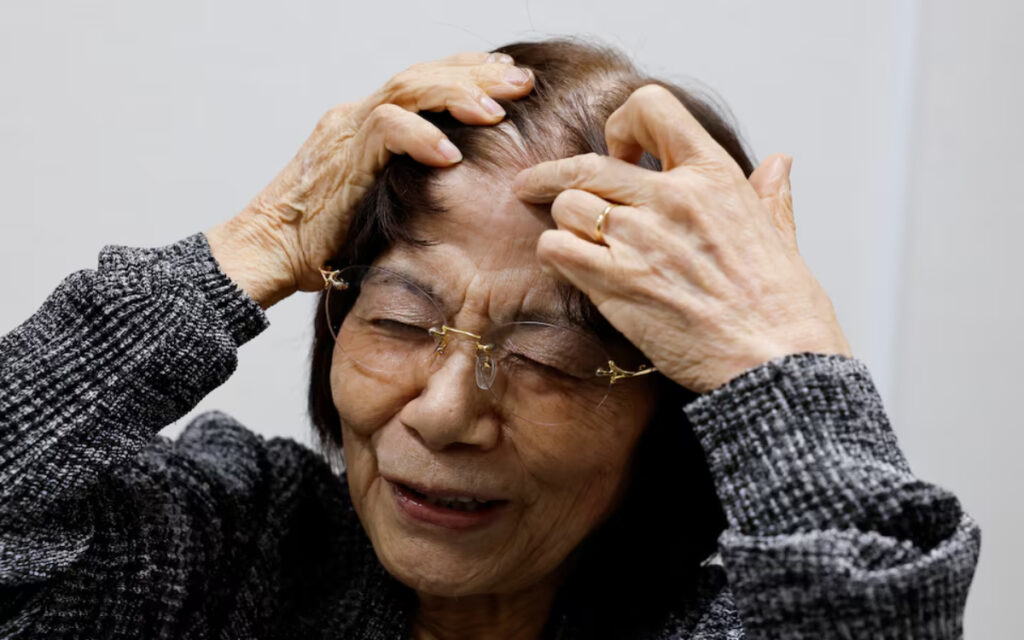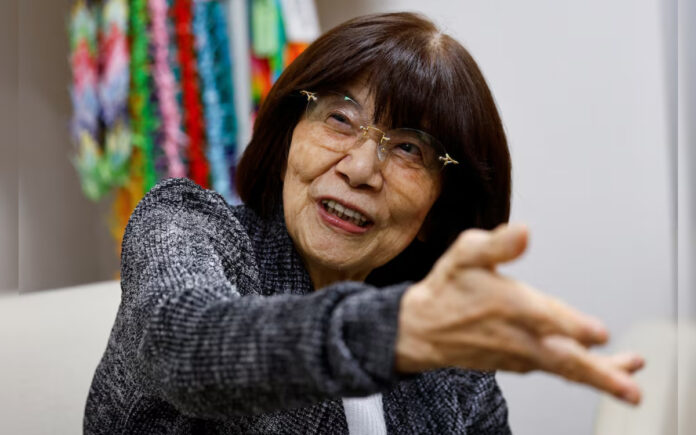Hiroshima: Nearly eight decades after an atomic bomb obliterated her hometown of Hiroshima, Teruko Yahata still bears the scar on her forehead from being thrown by the force of the blast. The U.S. bombing of Hiroshima on August 6, 1945, followed by the Nagasaki bombing three days later, reshaped world history, leaving survivors like Yahata not only with physical scars but also a deep sense of responsibility for promoting disarmament.
On Friday, that responsibility was thrust back into the spotlight when the Nobel Peace Prize was awarded to Nihon Hidankyo, a group of atomic bomb survivors advocating against the dangers of nuclear weapons. The award has reignited hope among survivors and underscored the importance of their ongoing mission.
“It felt as if a light suddenly shone through. I felt like I could see the light,” Yahata, now 87, shared on Saturday when she learned about the Nobel Prize. “This feels like the first step, the beginning of a movement toward nuclear abolition,” she told Reuters while standing at the Hiroshima Peace Memorial Museum.

At the time of the bombing, Yahata was only eight years old, playing in the back garden of her home. Although her house was 2.5 kilometers (1.5 miles) from the hypocenter, the force of the blast flung her several meters back into the house. Today, 79 years later, a long line of visitors—both foreign and Japanese—stretches outside the museum, a day after the Norwegian Nobel Committee’s announcement of the prize.
The Hiroshima Peace Memorial Park has become a gathering place for activists, with signs calling for nuclear disarmament adorning a bridge leading to the site. Campaigners, emboldened by the Nobel recognition, collected signatures from passersby in support of nuclear abolition.
Nihon Hidankyo’s Fight for Peace

Nihon Hidankyo, established in 1956, has been relentless in its efforts to keep the memory of the atomic bombings alive. The organization has provided thousands of witness accounts, issued resolutions and public appeals, sent delegations to the United Nations and peace conferences, and collected signatures urging nuclear disarmament.
Also Read | Harris Highlights Health and Fitness in Contrast to Trump
While Yahata is not a member of Nihon Hidankyo, she commended the group’s dedication to gathering signatures and promoting the message of nuclear abolition. “It’s this combination of sadness and joy that has led them to this peace prize. I think it’s something very meaningful,” she said.
A Heavier Burden of Responsibility
For Nihon Hidankyo’s co-chair, Toshiyuki Mimaki, the Nobel Prize signifies not just recognition but a greater sense of duty. “Rather than feeling purely happy, I feel like I have more responsibility now,” the 82-year-old said in an interview at the group’s office in Hiroshima, sitting beside a map that shows the devastating impact of the atomic bomb on the city.
Also Read | NATO Expands Missile Defense Network with New Base in Poland
As most of the atomic bomb survivors are now over 85 years old, Mimaki noted that the challenge is how to sustain their mission. “In rural areas, the group is on the verge of falling apart,” he added. “The big challenge now is what to do going forward.”



